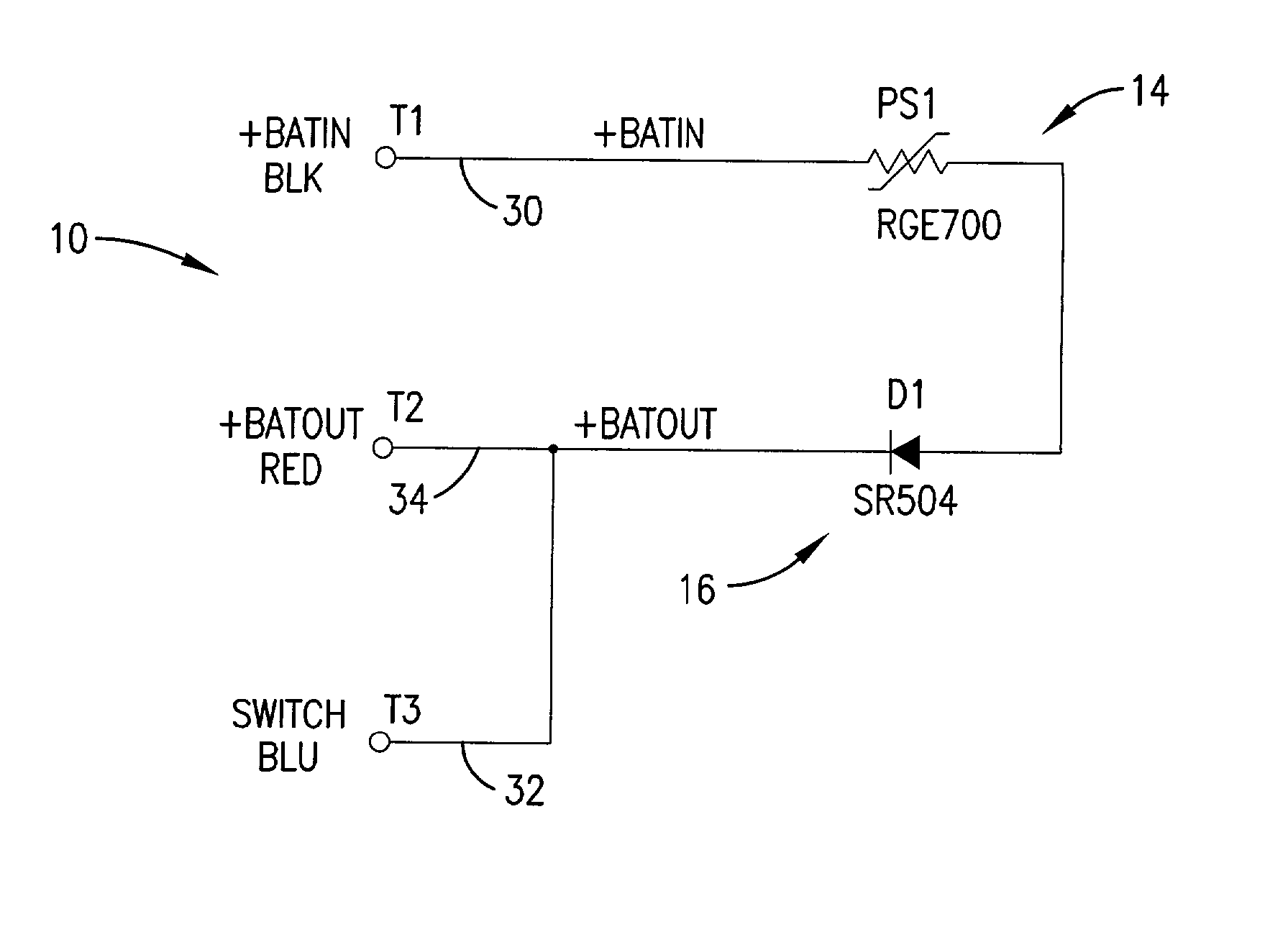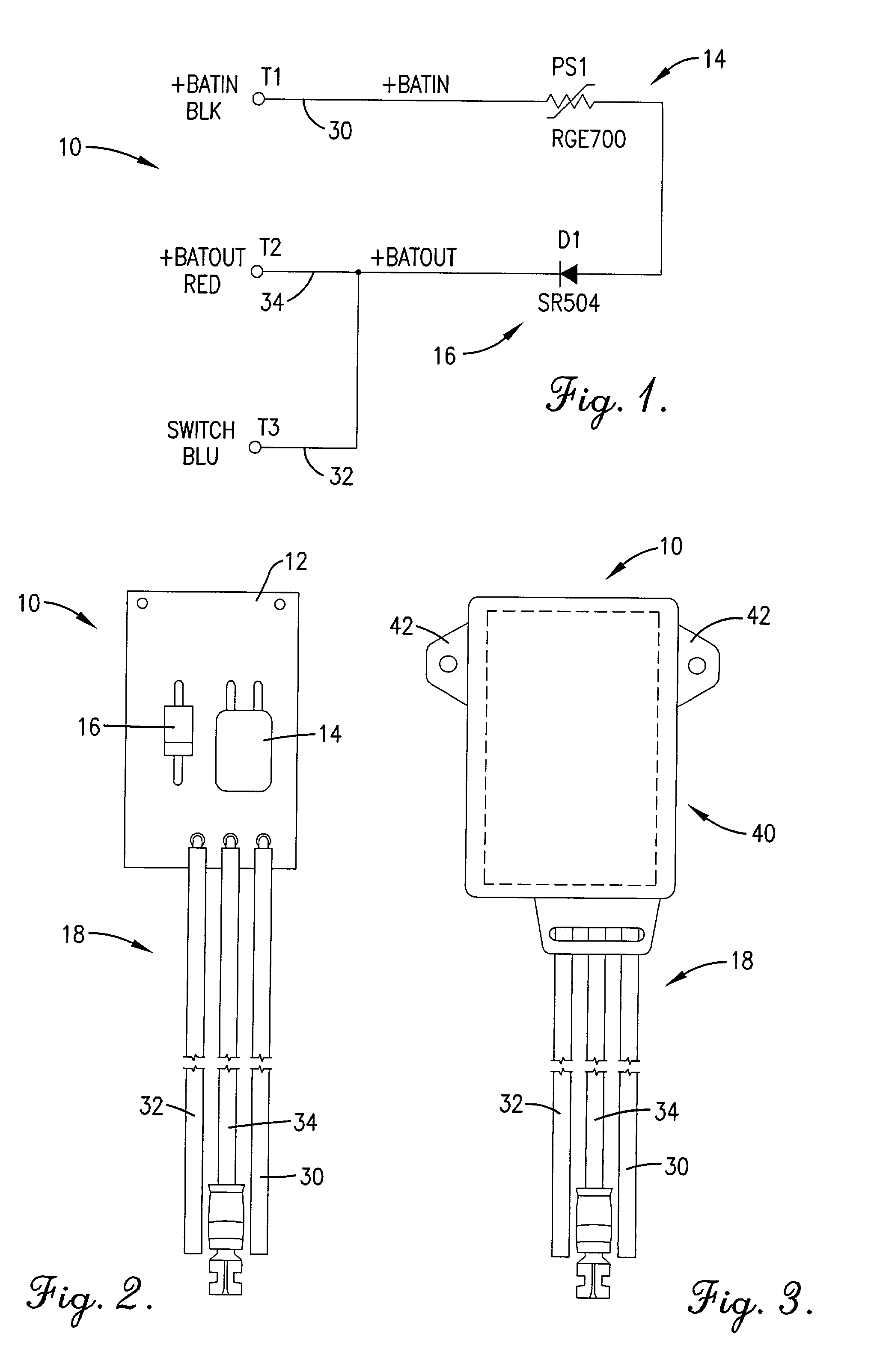Battery charger protection circuit
a protection circuit and charger technology, applied in the direction of safety/protection circuits, battery overheat protection, transportation and packaging, etc., can solve the problems of short circuit conditions, damage to one or both batteries, the charger system, and any other electrical load system coupled therewith, and the inability to locate the fus
- Summary
- Abstract
- Description
- Claims
- Application Information
AI Technical Summary
Problems solved by technology
Method used
Image
Examples
Embodiment Construction
.
[0010] A preferred embodiment of the present invention is described in detail below with reference to the attached drawing figures, wherein:
[0011] FIG. 1 is a circuit schematic showing a preferred embodiment of the battery charger protection circuit of the present invention;
[0012] FIG. 2 is a top plan view of the battery charger protection circuit corresponding to the circuit schematic of FIG. 1;
[0013] FIG. 3 is a top plan view of the battery charger protection circuit of FIG. 2 encased within a protective housing; and
[0014] FIG. 4 is a block diagram showing the battery charger protection circuit incorporated into a preferred embodiment of a battery charger system.
[0015] The drawing figures do not limit the present invention to the specific embodiments disclosed and described herein. The drawings are not necessarily to scale, emphasis instead being placed upon clearly illustrating the principles of the invention.
DETAILED DESCRIPTION OF A PREFERRED EMBODIMENT
[0016] Referring to FIGS...
PUM
 Login to View More
Login to View More Abstract
Description
Claims
Application Information
 Login to View More
Login to View More - R&D
- Intellectual Property
- Life Sciences
- Materials
- Tech Scout
- Unparalleled Data Quality
- Higher Quality Content
- 60% Fewer Hallucinations
Browse by: Latest US Patents, China's latest patents, Technical Efficacy Thesaurus, Application Domain, Technology Topic, Popular Technical Reports.
© 2025 PatSnap. All rights reserved.Legal|Privacy policy|Modern Slavery Act Transparency Statement|Sitemap|About US| Contact US: help@patsnap.com



